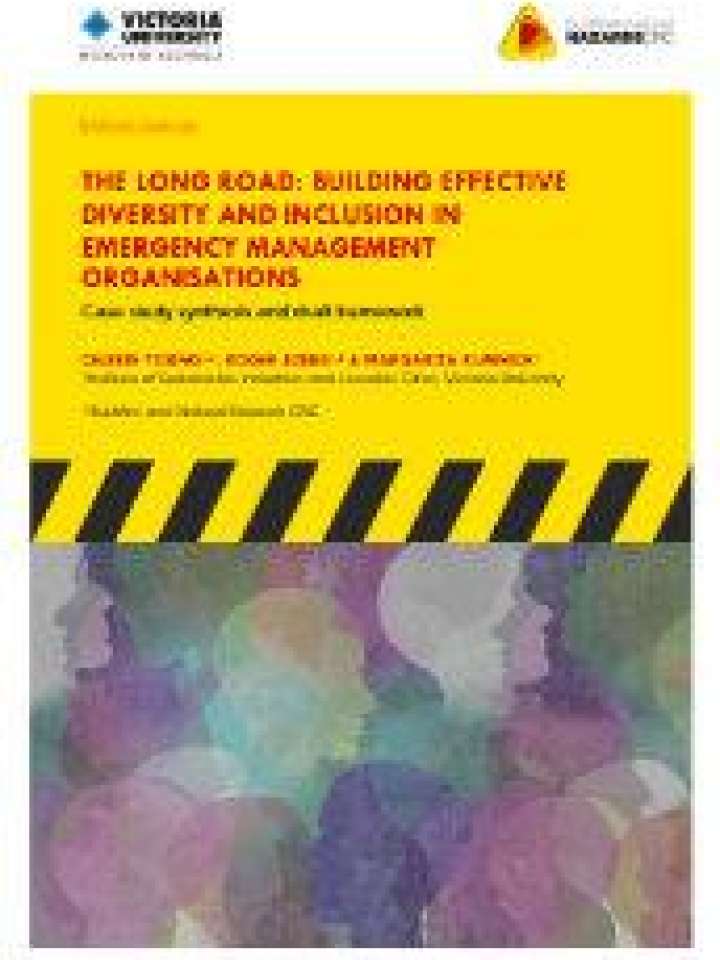The long road: building effective diversity and inclusion in emergency management
Although diversity and inclusion (D&I) is not a new concept or area of practice for the Emergency Management Sector (EMS), there has been little clarity of what effective D&I practice is, particularly in relation to its management and measurement. EMS organisations are complex, and increasingly, dynamic social, environmental and economic factors are driving the need for transformation in the sector.
This report presents a synthesis of key findings from the organisational assessments and relevant research from the literature review undertaken for the project Diversity and Inclusion: Building strength and capability. Case study assessments were undertaken with three EMS organisations – Queensland Fire and Rescue, Fire and Rescue New South Wales) and South Australian State Emergency Services. The aim of the research was to develop an understanding of the key factors influencing effective implementation, and key components needed for a draft D&I framework, which is presented in this report.
Using a systemic analysis focused on decision making, this research provides insights into how past and present practice and the evolution of these organisations influences their current approaches to D&I. It also provides an analysis of the barriers, needs, opportunities and benefits collated during the interviews and key themes that arose. D&I is now a key business imperative for all EMS organisations but much work still needs to be done before effective practice in D&I can be achieved. However, these organisations also contain pre-existing strengths and knowledge that present considerable opportunities. Achieving effective D&I is a long-term proposition with many challenges, and for organisations who have the courage to persist through this process, the benefits of a more diverse and inclusive organisation are there to be realised.
Explore further
